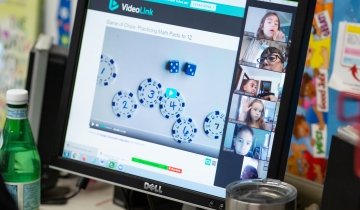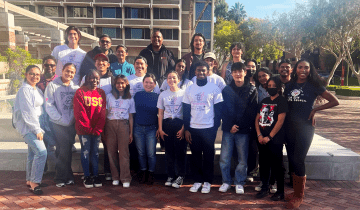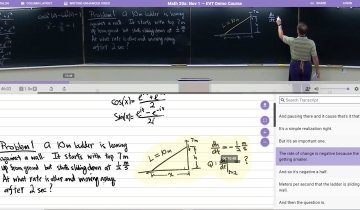
Dr. Gary Scott, Associate Professor of Clinical Education, is using the wonder of invention to spark an interest in STEM among local Los Angeles Unified School District students. His idea for what he calls the “Inventatorium” came about a year ago.
“I had one of those cognitive disequilibrium moments where it occurred to me that the engaging aspects of the Exploratorium in San Francisco needed to be connected to students’ creativity and invention abilities,” Scott said.
“Once students were awed and dazzled by the beauty and mystery of displays and exhibits representing STEM concepts, we needed to funnel that energy and motivation based on students’ interests.”

Scott brought the idea to 93rd Street School sixth grade teacher LaNelle Harvey, and with support from Principal Sharon Katz, they piloted the Inventatorium as an afterschool program in January.
The Inventatorium lets kids invent, design and build structures, mechanisms and devices based on their interests and creativity. Building on students’ inherent curiosity and desire to create, the Inventatorium incorporates art and patterns; building structures; motion and machines; and navigation-stargazing into activities.
For Mother’s Day, for example, students learned paper engineering by designing and creating their own pop-up books for their mothers. Students also recently engaged in a series of design challenges involving toy vehicles that included testing automotive safety with raw eggs instead of dummies; coordinating a three-car collision model for a movie scene; and designing a vehicle tug-o-war.
There is no question that the afterschool program is engaging and motivating students. “These kids really look forward to it, and as other kids hear about it, they start showing up,” Harvey said. “These kids never want to leave.”
Next fall, the program will expand to include 5th grade, and be integrated into the students’ mathematics curriculum during the school day as well. Scott said the activities help bring the creativity, imagery and emotion that is often absent from teaching practices and curricula found in K-12 educational settings.
When kids establish emotional connections to STEM concepts through their inventions, they will be more likely to fully engage in STEM subjects in school, and consider careers in STEM fields later in life, he said. “If students don’t have an emotional connection to STEM concepts, why should they care about performing well in these domains or consider STEM careers?” he asked.
Harvey said she has seen the Inventatorium ignite a passion – for these subjects in many of her students over the past year. “I’ve seen an increase in their perseverance in math. It’s been very positive in terms of developing critical thinking skills and a sense of ownership of their learning,” Harvey said. “It is coming from them, not a book or a teacher. That’s the goal – that these kids become independent thinkers.”



